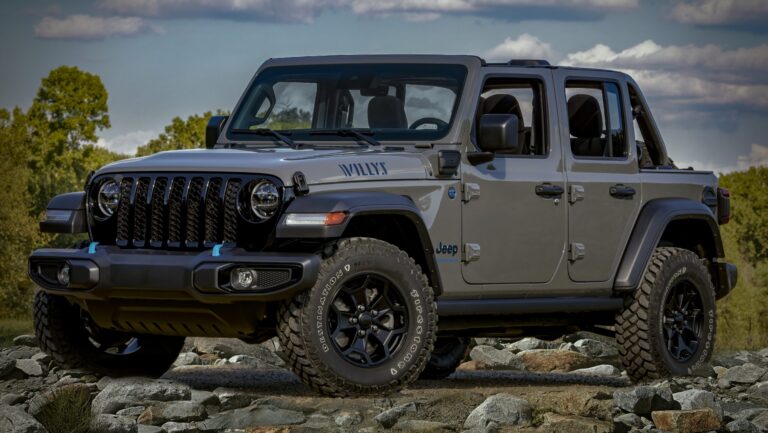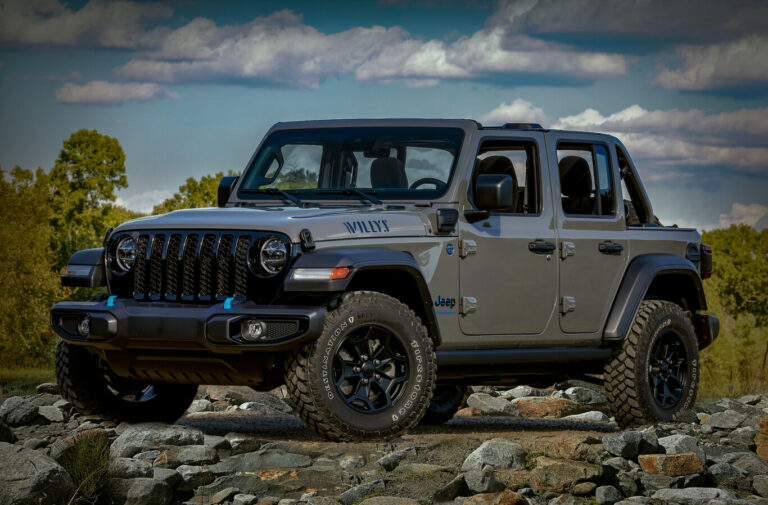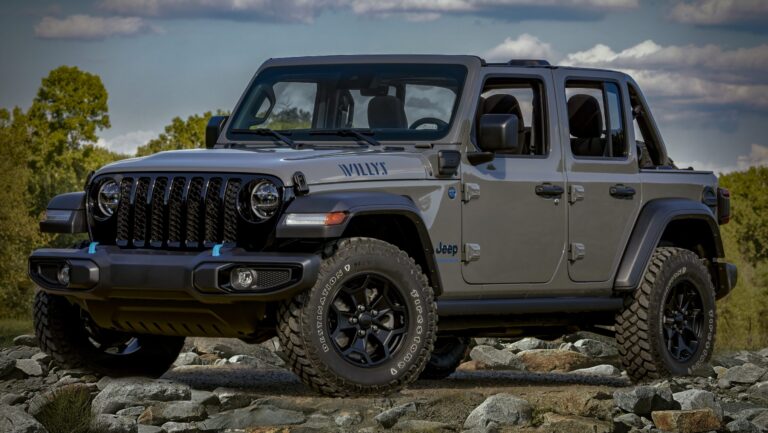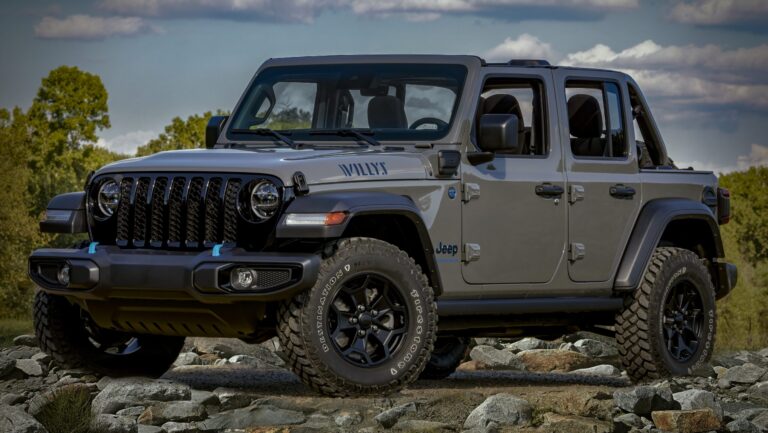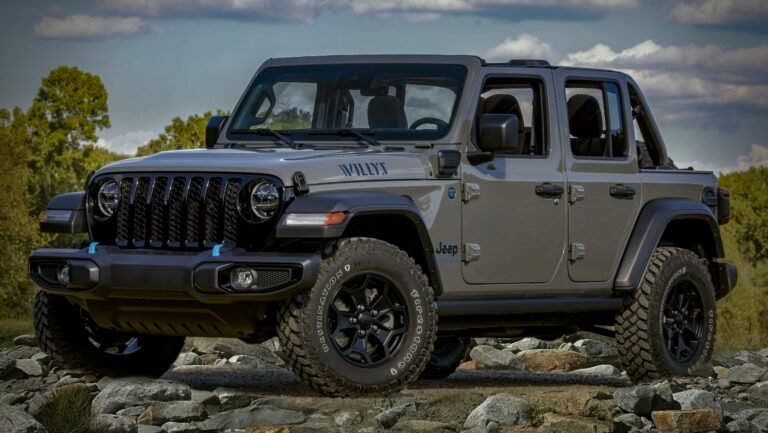Jeep XJ Lift Kit For Sale: Unlocking Your Cherokee’s Full Potential
Jeep XJ Lift Kit For Sale: Unlocking Your Cherokee’s Full Potential jeeps.truckstrend.com
The Jeep Cherokee XJ, a rugged and iconic SUV produced from 1984 to 2001, has cemented its place in automotive history as a formidable off-road machine and a beloved platform for customization. Its unibody construction, solid axles, and legendary reliability make it an ideal candidate for those seeking adventure beyond the pavement. However, even this capable vehicle has its limits in stock form. This is where the Jeep XJ Lift Kit For Sale comes into play, transforming a capable daily driver into an unstoppable trail conqueror.
A lift kit, in essence, is a comprehensive suspension modification designed to increase the vehicle’s ground clearance, allow for the fitment of larger tires, and enhance overall off-road performance and aesthetics. For the Jeep XJ enthusiast, investing in a quality lift kit isn’t just about looks; it’s about unlocking the true spirit of the Cherokee, enabling it to navigate challenging terrains with greater ease and confidence. This guide will delve deep into everything you need to know about purchasing and installing a lift kit for your beloved XJ, from understanding the different types available to critical considerations and installation tips.
Jeep XJ Lift Kit For Sale: Unlocking Your Cherokee’s Full Potential
Understanding the Jeep XJ and the Role of a Lift Kit
The Jeep Cherokee XJ holds a unique position in the 4×4 world. Its compact size, combined with robust mechanicals, made it incredibly agile and durable. However, stock XJs typically come with limited ground clearance and wheel travel, which can hinder performance on more aggressive trails.
A lift kit addresses these limitations by replacing or modifying key suspension components. A typical XJ lift kit will include:
- New Coil Springs: For the front suspension, providing lift and often improved ride quality.
- New Leaf Springs: For the rear, replacing worn-out stock springs and providing the desired lift. Alternatively, "add-a-leafs" or shackles might be used for smaller lifts.
- Longer Shock Absorbers: Essential to accommodate the increased suspension travel and maintain proper damping.
- Adjustable Track Bar: Crucial for recentering the front axle after lifting, preventing steering issues.
- Longer Control Arms: (For larger lifts) To correct caster angles and improve articulation.
- Extended Brake Lines: To ensure adequate length during full suspension droop.
- Sway Bar Disconnects/Extended Links: To allow for greater articulation off-road while maintaining on-road stability.
- Transfer Case Drop Kit or Slip Yoke Eliminator (SYE): Often necessary to correct driveshaft angles and prevent vibrations at higher lift heights.


These components work in harmony to elevate the vehicle’s body, providing the necessary clearance for larger tires and allowing the suspension to articulate more freely over uneven terrain.
Why Lift Your Jeep XJ? The Benefits Unveiled
The decision to install a lift kit on your Jeep XJ is often driven by a combination of practical and aesthetic desires. The benefits extend far beyond just looking good:
- Increased Ground Clearance: This is perhaps the most significant advantage. Lifting your XJ raises the undercarriage, reducing the risk of scraping the differential, transfer case, or exhaust on rocks, logs, and other obstacles.
- Ability to Mount Larger Tires: Larger tires significantly improve traction and flotation in various off-road conditions (mud, sand, snow, rocks). A lift kit provides the necessary fender clearance to prevent rubbing, especially during suspension compression or turning.
- Enhanced Off-Road Performance:
- Improved Approach, Departure, and Breakover Angles: A higher stance means you can climb steeper obstacles without scraping the front bumper, descend without dragging the rear, and clear obstacles beneath the vehicle more easily.
- Greater Articulation: Many lift kits include components that allow the axles to move more independently, keeping all four tires on the ground for maximum traction over uneven terrain.
- Aggressive Aesthetics: There’s no denying that a lifted XJ looks more imposing and capable. It transforms the vehicle’s stance, giving it a more purposeful and rugged appearance that aligns with its off-road heritage.
- Better Visibility: A higher driving position can offer a commanding view of the road and trail ahead, allowing you to spot obstacles more quickly.

Types of Jeep XJ Lift Kits For Sale: Finding Your Perfect Match
Jeep XJ lift kits come in various configurations, each suited for different needs, budgets, and levels of off-road ambition.
-
1. Budget Boosts (1.5" – 2"):
- Components: Typically polyurethane coil spacers for the front and "add-a-leafs" or longer shackles for the rear. Sometimes includes longer shocks.
- Pros: Most affordable, easiest to install, maintains near-stock ride quality.
- Cons: Minimal lift, limited performance gain, may not allow for significantly larger tires (max 30-31 inches with trimming).
- Best For: Those on a tight budget, looking for a subtle aesthetic lift, or only tackling very light trails.
-
2. Short Arm Kits (3" – 4.5"):
- Components: New coil springs, full replacement leaf springs or add-a-leafs/shackles, longer shocks, adjustable front track bar, often a transfer case drop. May include lower fixed control arms and extended sway bar links.
- Pros: Good balance of performance and cost, allows for 31-33 inch tires (33s often require trimming), noticeable improvement in off-road capability.
- Cons: Can affect caster angles at the higher end of the range, potentially causing mild steering issues or "death wobble" if not properly aligned or if cheaper components are used. A transfer case drop might be necessary for driveline vibrations.
- Best For: Weekend warriors, moderate trail use, and those seeking a significant upgrade without breaking the bank. This is arguably the most popular lift height for XJs.
-
3. Long Arm Kits (4.5" – 6.5"+):
- Components: New coil springs, full replacement leaf springs, longer shocks, adjustable front track bar, long adjustable control arms (upper and lower), new crossmember for long arm mounting, extended brake lines, sway bar disconnects, and usually require a Slip Yoke Eliminator (SYE) and custom driveshaft.
- Pros: Superior articulation, excellent ride quality both on and off-road (due to flatter control arm angles), allows for 33-35+ inch tires (often with significant fender trimming), ultimate off-road performance.
- Cons: Most expensive, complex installation, requires more supporting modifications (SYE, driveshaft, potentially gearing changes), higher center of gravity.
- Best For: Serious rock crawlers, dedicated off-road vehicles, and those who demand the best possible performance and comfort on extreme trails.
Key Considerations When Buying a Jeep XJ Lift Kit
Purchasing a lift kit is a significant investment. To ensure you make the right choice, consider the following:
- Intended Use: Will your XJ be a daily driver, a weekend trail rig, or a dedicated rock crawler? This dictates the lift height and type of kit you need.
- Desired Tire Size: The lift height directly correlates with the largest tire size you can comfortably run. Plan your tire size first, then choose a lift kit accordingly.
- Budget: Be realistic about what you can afford. Remember to factor in not just the kit price, but also potential supporting modifications, new tires, and professional installation if you’re not doing it yourself.
- Manufacturer Reputation and Quality: Stick with reputable brands known for quality components and good customer service. Examples include Rough Country, BDS Suspension, Rubicon Express, Old Man Emu (OME), Clayton Off Road, Rock Krawler, and TeraFlex. Cheaper kits might save money upfront but can lead to premature wear, poor ride quality, or safety issues.
- Installation Difficulty: Some kits are bolt-on and relatively straightforward for a mechanically inclined individual. Others require significant fabrication, cutting, and welding, best left to professionals.
- Ride Quality Preference: Some kits are designed for a stiffer, more controlled ride, while others aim for a plush, comfortable feel. Read reviews and ask for opinions from other XJ owners.
Crucial Supporting Modifications: Don’t Forget These!
Lifting your XJ isn’t just about bolting on new springs and shocks. Higher lifts, in particular, often necessitate additional components to maintain proper vehicle geometry, prevent driveline vibrations, and ensure safe operation:
- Slip Yoke Eliminator (SYE) & Driveshaft: For lifts 3" and above, the increased angle of the rear driveshaft can cause vibrations. An SYE converts the transfer case output to a fixed yoke, allowing for a longer, stronger custom driveshaft with a CV joint, eliminating vibrations.
- Adjustable Control Arms: Essential for correcting caster angles (front) and pinion angles (rear) at higher lifts, preventing steering wander and driveline issues.
- Adjustable Track Bar: Absolutely critical for all lifts above 2" to re-center the front axle and prevent "death wobble" (a violent, uncontrollable shaking of the steering wheel).
- Extended Brake Lines: To ensure your brake lines don’t stretch or break when the suspension is at full droop.
- Sway Bar Disconnects: For improved articulation off-road, allowing the front axle to move more freely.
- Steering Upgrades: For 4.5"+ lifts, upgrading the steering components (e.g., V8 ZJ tie rod, heavy-duty drag link, steering box brace) is highly recommended to handle the stress of larger tires and off-road abuse.
- Gearing: For larger tires (33" and up), re-gearing your axles is often necessary to restore lost power, improve fuel economy, and reduce strain on the drivetrain. This is a significant additional expense.
- Fender Trimming: For very large tires (33"+ with 4.5" lift, or 35"+), trimming the fender flares and sheet metal is often required to prevent rubbing during compression.
Where to Find Jeep XJ Lift Kits For Sale
The market for Jeep XJ lift kits is robust. Here are common places to find them:
- Online Retailers: Large online off-road parts suppliers like Quadratec, Morris 4×4 Center, Extreme Terrain, Northridge4x4, Summit Racing, and Amazon offer a wide selection from various manufacturers.
- Manufacturer Websites: Many reputable lift kit brands (e.g., Rough Country, BDS, Rubicon Express, Old Man Emu, Clayton Off Road) sell directly from their websites.
- Local Off-Road Shops: These shops can offer personalized advice, installation services, and often have relationships with specific manufacturers.
- Used Market: Websites like Craigslist, Facebook Marketplace, and dedicated Jeep forums often have used lift kits for sale. Exercise caution, inspect components thoroughly for damage, and be aware that worn components may need replacement.
Installation Tips and Potential Challenges
Installing a lift kit can be a rewarding DIY project, but it requires patience, the right tools, and an understanding of mechanics.
- Safety First: Always use sturdy jack stands on level ground. Never work under a vehicle supported only by a jack. Wear appropriate safety gear.
- Rust is Your Enemy: XJs, especially older ones, are prone to rust. Seized bolts, rusted nuts, and corroded components are common. Have plenty of penetrating oil (like PB Blaster or Liquid Wrench), a wire brush, and a good impact wrench ready. You may need to cut off stubborn bolts.
- Tools: A comprehensive socket set (metric and standard), wrenches, torque wrench, floor jack, jack stands, pry bars, and a spring compressor (though often not strictly necessary for XJ coils if careful) are essential.
- Follow Instructions: Always read the manufacturer’s instructions thoroughly before starting.
- Take Your Time: Don’t rush. Double-check everything.
- Axle Alignment: After installation, a professional alignment is crucial to correct caster, camber, and toe angles. This prevents uneven tire wear and steering issues.
- Driveshaft Vibrations: If you experience vibrations after lifting, especially under acceleration, it’s likely a driveline angle issue. This points to the need for a transfer case drop or, preferably, an SYE and new driveshaft.
- Post-Installation Checks: After driving a few hundred miles, re-torque all bolts, especially those on the control arms and track bar, as components settle.
Jeep XJ Lift Kit For Sale: Pricing Guide
The price of a Jeep XJ lift kit varies significantly based on lift height, component quality, and included accessories. This table provides a general range:
| Lift Height (Inches) | Kit Type/Description | Typical Price Range (USD) | Key Components Included | Notes/Considerations |
|---|---|---|---|---|
| 1.5" – 2" | Budget Boost/Spacer Kit | $100 – $300 | Polyurethane spacers, Add-a-Leafs (AALs) or shackles, sometimes shock extensions. | Minor lift, easy install, maintains near-stock ride quality. Limited tire size increase (up to 30-31"). |
| 3" – 3.5" | Basic Short Arm Kit | $400 – $800 | New coil springs, full replacement leaf springs or AALs/shackles, longer shocks. Often includes a transfer case drop. | Popular entry-level kit. Good for 31" tires, possibly 32" with minor trimming. |
| 4.5" – 5" | Advanced Short Arm Kit | $800 – $1500 | New coil springs, full replacement leaf springs, longer shocks, adjustable front track bar, adjustable lower control arms, extended brake lines, sway bar disconnects. | Allows for 33" tires (may require trimming). Improved articulation. |
| 6" – 6.5"+ | Long Arm Kit | $1500 – $3000+ | New coil springs, full replacement leaf springs, longer shocks, adjustable long control arms, new crossmember, adjustable front track bar, extended brake lines, sway bar disconnects. | For serious off-roading, 33-35"+ tires (requires significant trimming). Superior articulation and ride quality. Often does NOT include SYE/driveshaft. |
| Additional Common Costs (Not Always Included in Kit Price) | ||||
| Slip Yoke Eliminator (SYE) & Driveshaft | $300 – $700+ | Eliminates driveline vibrations for lifts 3"+. | Highly recommended/necessary for most lifts over 3". | |
| Professional Alignment | $80 – $150 | Corrects steering and suspension geometry. | Essential after any lift installation. | |
| New Tires (31"-35") | $800 – $2000+ | A major expense; often the primary reason for lifting. | ||
| Re-gearing Axles | $1000 – $2500+ | Restores power for larger tires. | Recommended for 33"+ tires, especially for daily driving or heavy off-roading. | |
| Professional Installation Labor | $500 – $1500+ | If you don’t DIY. | Varies greatly by shop and complexity of kit. |
Note: Prices are estimates and can vary based on brand, sales, and specific components included in each kit.
Frequently Asked Questions (FAQ) About Jeep XJ Lift Kits
Q1: What size lift do I need for specific tire sizes?
A1:
- 30-31 inches: 1.5-3 inches of lift (some trimming may be needed for 31s with 1.5-2" lift).
- 32-33 inches: 3-4.5 inches of lift (33s often require significant fender trimming, especially with 3" lift).
- 35 inches: 4.5-6.5+ inches of lift (always requires extensive fender trimming and usually flat fenders).
Q2: Do I need a Slip Yoke Eliminator (SYE) with my XJ lift?
A2: For lifts of 3 inches or more, an SYE is highly recommended to prevent driveline vibrations. Below 3 inches, a transfer case drop may suffice, but an SYE is still the superior solution for long-term reliability and performance.
Q3: Will a lift kit affect my daily driving?
A3: Yes. You may notice a higher center of gravity, potentially increased body roll, and a different ride quality (can be stiffer or smoother depending on the kit). Fuel economy may also decrease, especially with larger, heavier tires and without re-gearing.
Q4: How long does it take to install an XJ lift kit?
A4: For an experienced DIY mechanic with good tools and no rust issues, a 3-4.5" short arm kit might take 8-16 hours. With rust, seized bolts, or less experience, it could easily stretch to 20+ hours or even multiple days. Long arm kits are more complex and take longer.
Q5: Do I need new wheels with a lift kit?
A5: Not always, but often recommended. Larger tires require specific backspacing (usually 3.75-4.5 inches for XJs) to prevent rubbing on control arms or fenders. Stock wheels often have too much backspacing for wider tires.
Q6: What is "death wobble" and how can I prevent it?
A6: Death wobble is a violent, uncontrollable oscillation of the front end, usually triggered by a bump or pothole. It’s often caused by worn steering components, improper alignment (especially caster), or a non-centered front axle. A quality adjustable track bar, proper alignment, and healthy steering components are crucial to prevent it.
Q7: Is it legal to lift my Jeep XJ?
A7: Lift laws vary by state and local jurisdiction. Check your local Department of Motor Vehicles (DMV) or equivalent agency for regulations regarding maximum bumper height, frame height, and tire coverage.
Conclusion: Unleash Your XJ’s Potential
The decision to purchase a Jeep XJ Lift Kit For Sale is a pivotal step for any XJ owner looking to enhance their vehicle’s capabilities and presence. From the subtle boost of a budget spacer kit to the extreme articulation of a long arm system, there’s a lift solution for every enthusiast and every trail.
By carefully considering your goals, budget, and the necessary supporting modifications, you can transform your iconic Cherokee XJ into an even more formidable and personalized off-road machine. The journey of lifting your XJ is more than just an upgrade; it’s an investment in adventure, a commitment to exploring new horizons, and a testament to the enduring legacy of one of Jeep’s most beloved vehicles. Get ready to conquer new trails and turn heads wherever you go – your lifted XJ awaits!


